Reading hint: 1 second stands for 1 arc second and equals about 30 m on the north/south axis and 20 m on the east/west axis for moderate latitudes. 3 arc sec are around 90 x 60 m. Meanwhile the 1 arc sec have been made available. They too can be downloaded directly, without taking the detour via
Earth Explorer.
Download addresses (
new addresses, updated 2018-04-09):
http://e4ftl01.cr.usgs.gov/MEASURES/SRTMGL3.003/ Default 3 arc second data for the world obtained by averaging the 1-arc-second raw data.
http://e4ftl01.cr.usgs.gov/MEASURES/SRTMGL3S.003/ Sampled 3 arc second data for the whole world obtained by getting the middle 1-arc-second raw data sample out of a 3×3 matrix.
http://e4ftl01.cr.usgs.gov/MEASURES/SRTMGL1.003 1 arc second data for the world.
Both 3 arc sec and 1 arc sec data on this server are in the well known .hgt format. Earth Explorer offers the same data but in different file formats. For TransDEM, select GeoTIFF. However, SRTM data on Earth Explorer has a reduced resolution in latitudinal direction, i.e. 2 x 1 arc sec for 1 arc data and 6 x 3 arc sec for 3 arc sec data. I suppose that doesn't really mean less detail because the original source probably isn't any better anyway.
I have made a few comparisons and picked the upper Ruhr valley in Westphalia, Germany (SRTM file N51 E007) for them.
Starting with the original SRTM 3 sec data of the well known version 2:
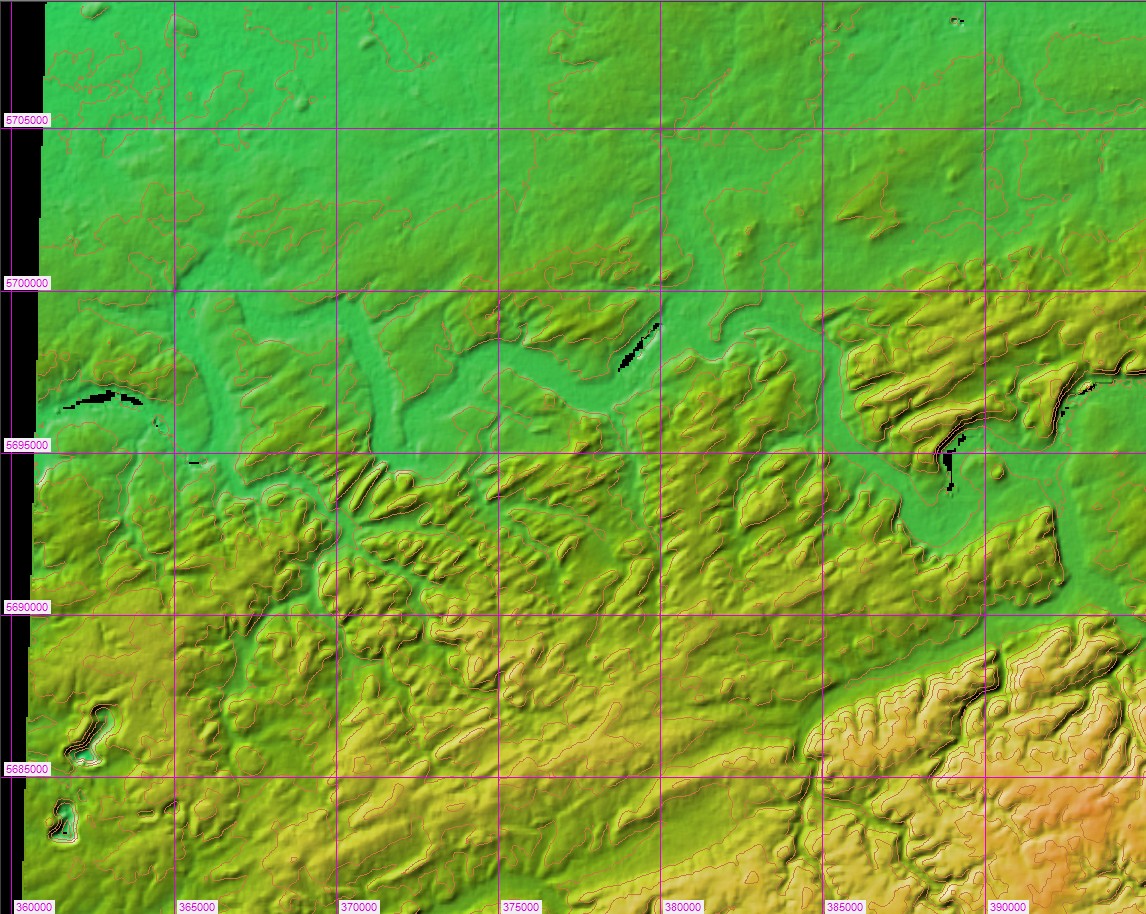 My edition is probably version 2.0 which still had holes for water surfaces.
My edition is probably version 2.0 which still had holes for water surfaces.Now new version 3 void filled data, 3 arc sec:
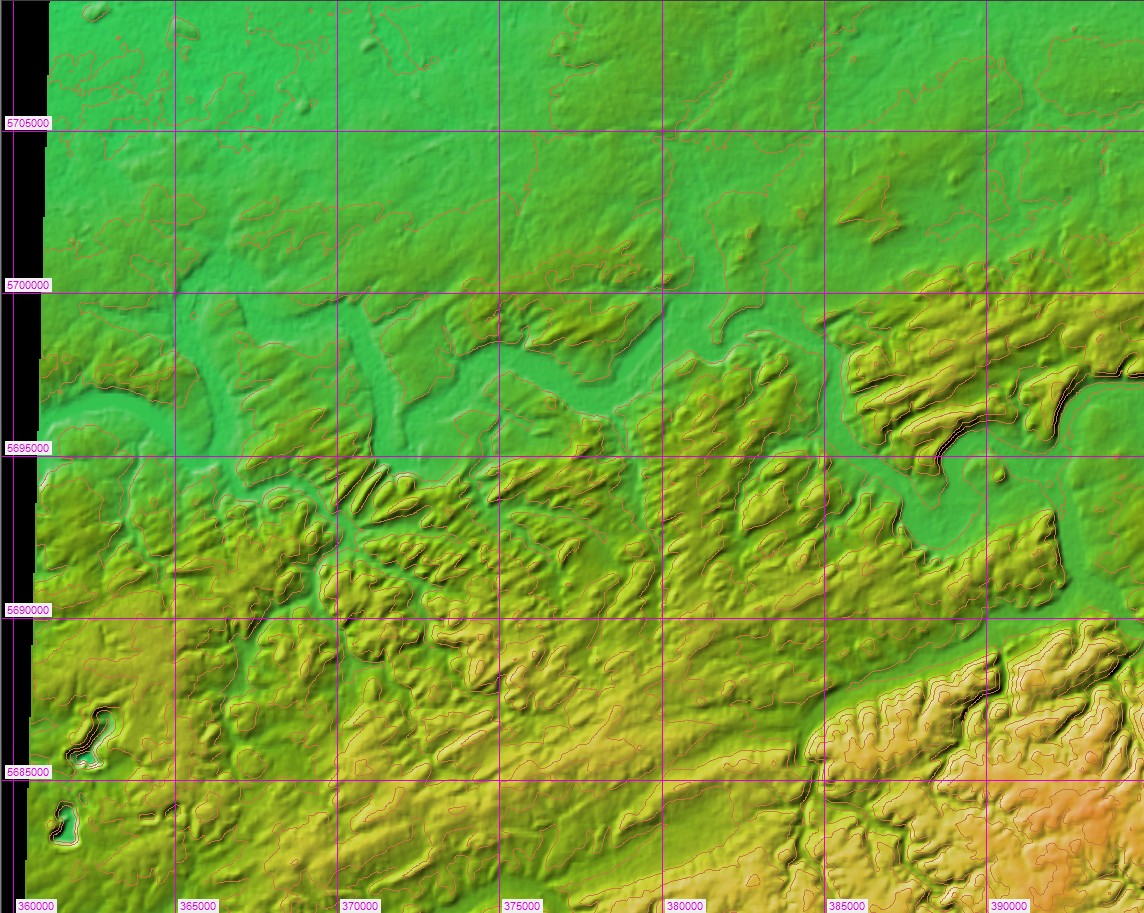 No more holes for water. Notable differences will probably require proper mountain areas where version 2.1 often has voids.
No more holes for water. Notable differences will probably require proper mountain areas where version 2.1 often has voids.Now the new SRTM 1 arc sec data:
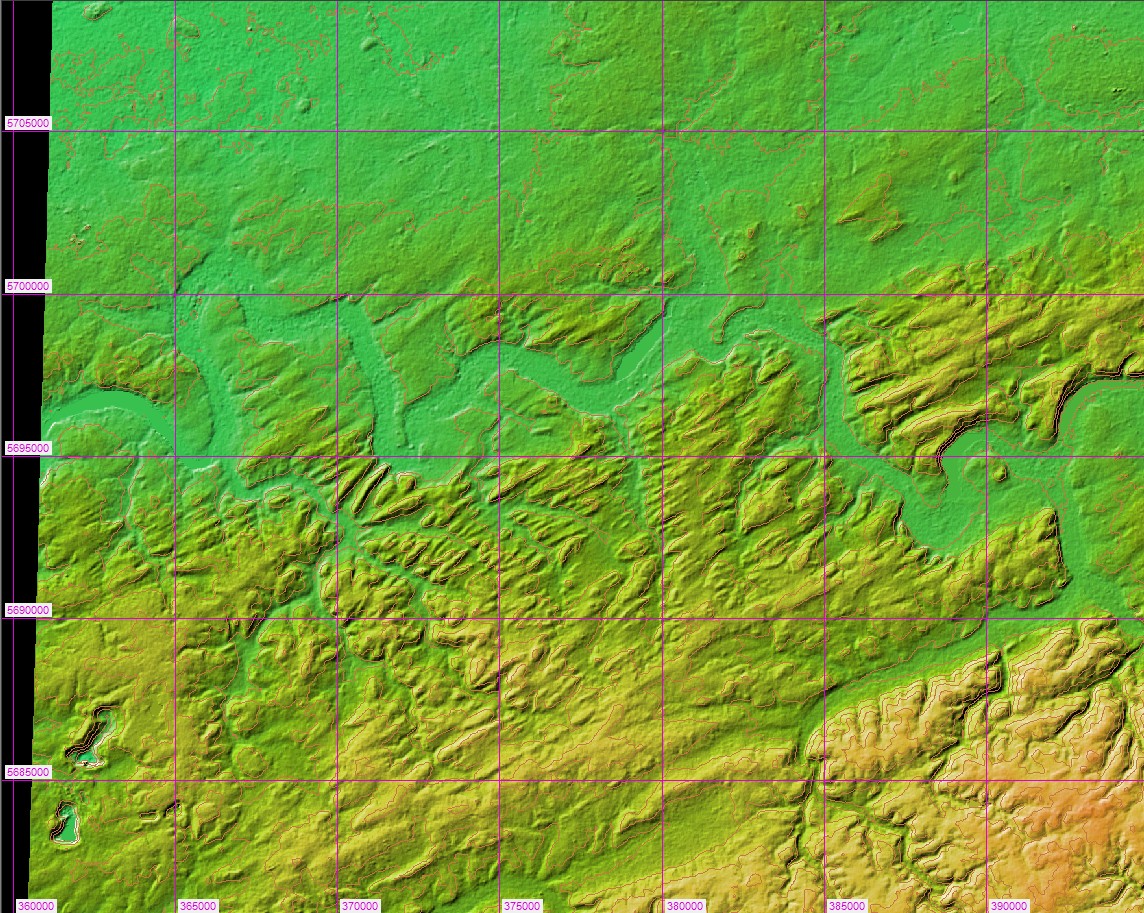 Even at this rather low scale the surface looks less smooth which means more details.
Even at this rather low scale the surface looks less smooth which means more details. Finally ASTER GDEM2, 1 arc second as well:
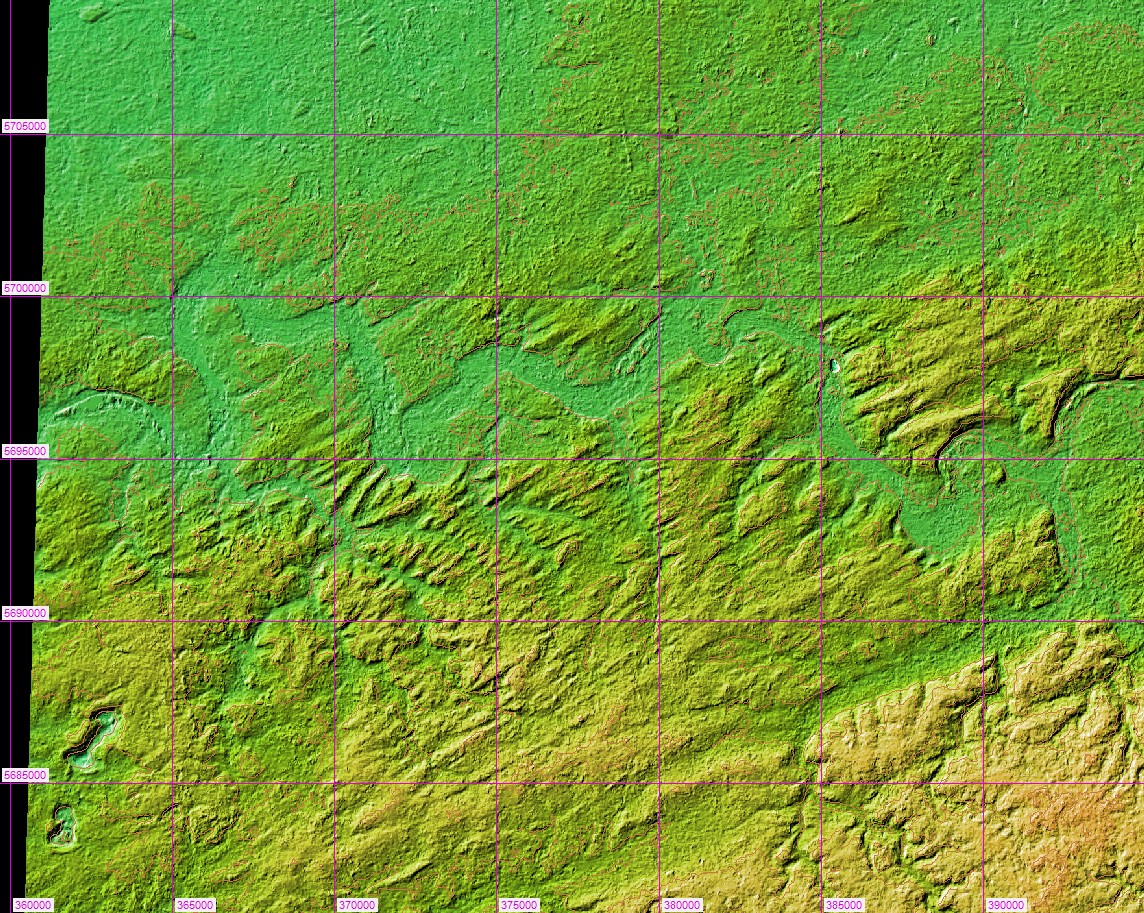 ASTER data always appears very uneven, implicated by the process involved.
ASTER data always appears very uneven, implicated by the process involved.Comparing at a larger scale is the more interesting story. For this I chose the valley of the river Lenne between Altena and Werdohl, southeast of the previous area.
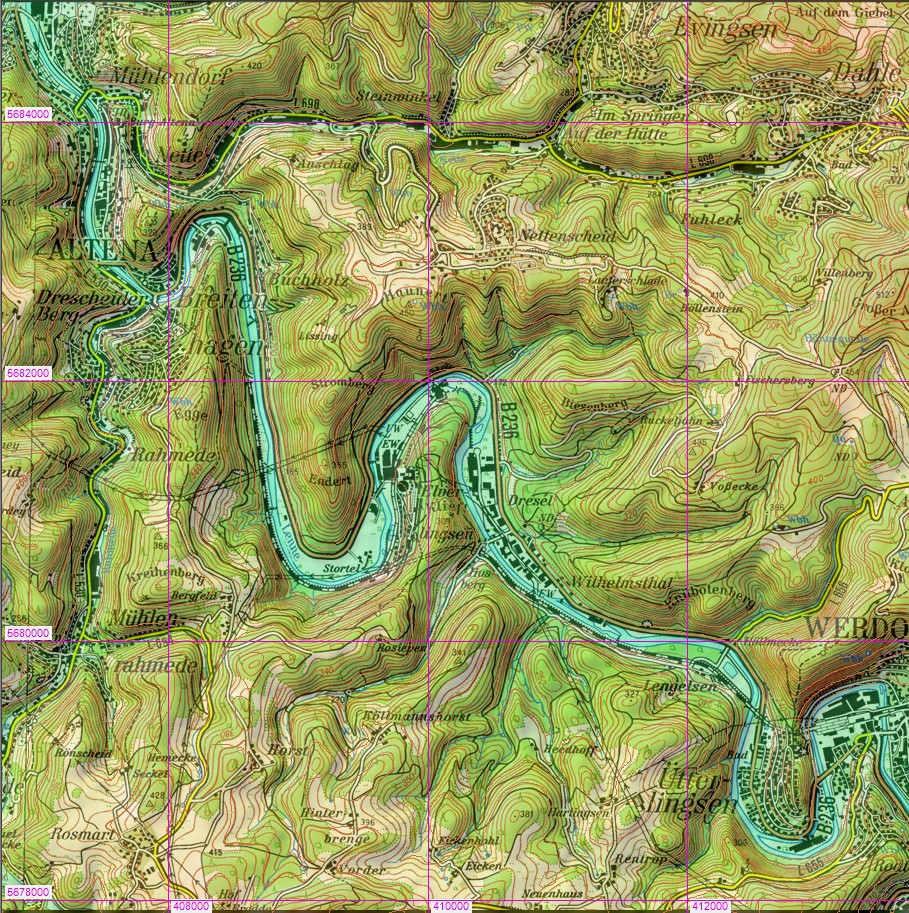
Original SRTM 3 arc sec data (Version 2):
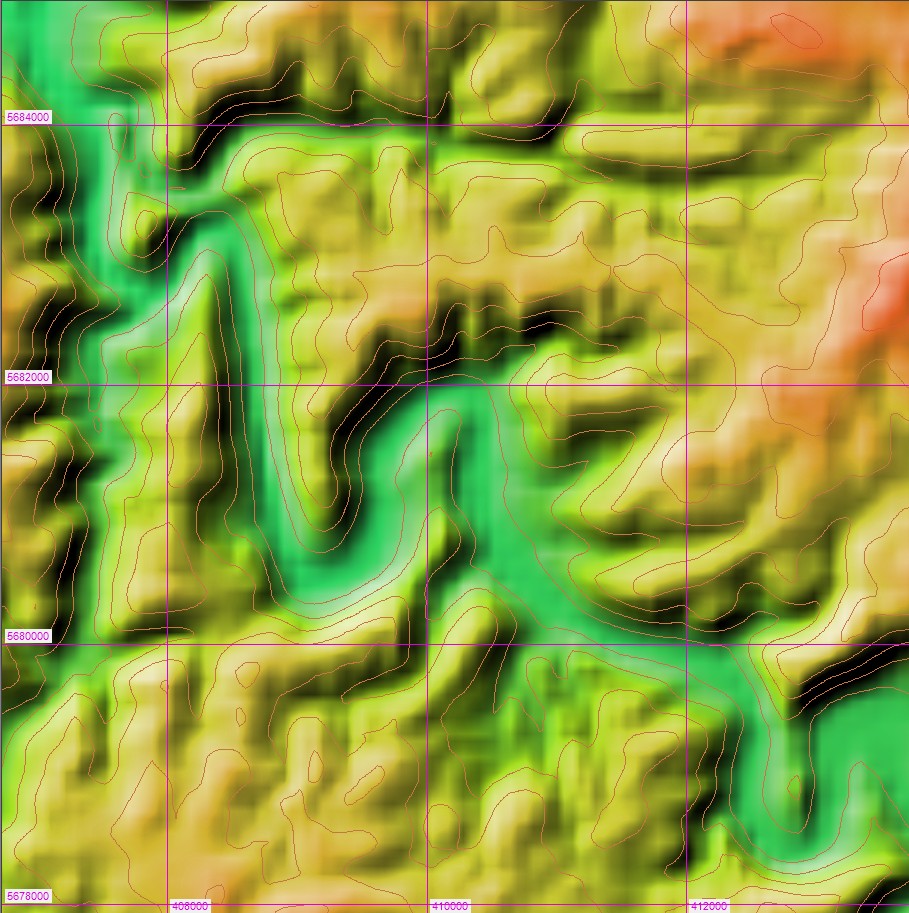
The new void-filled SRTM 3 arc sec data (Version 3):
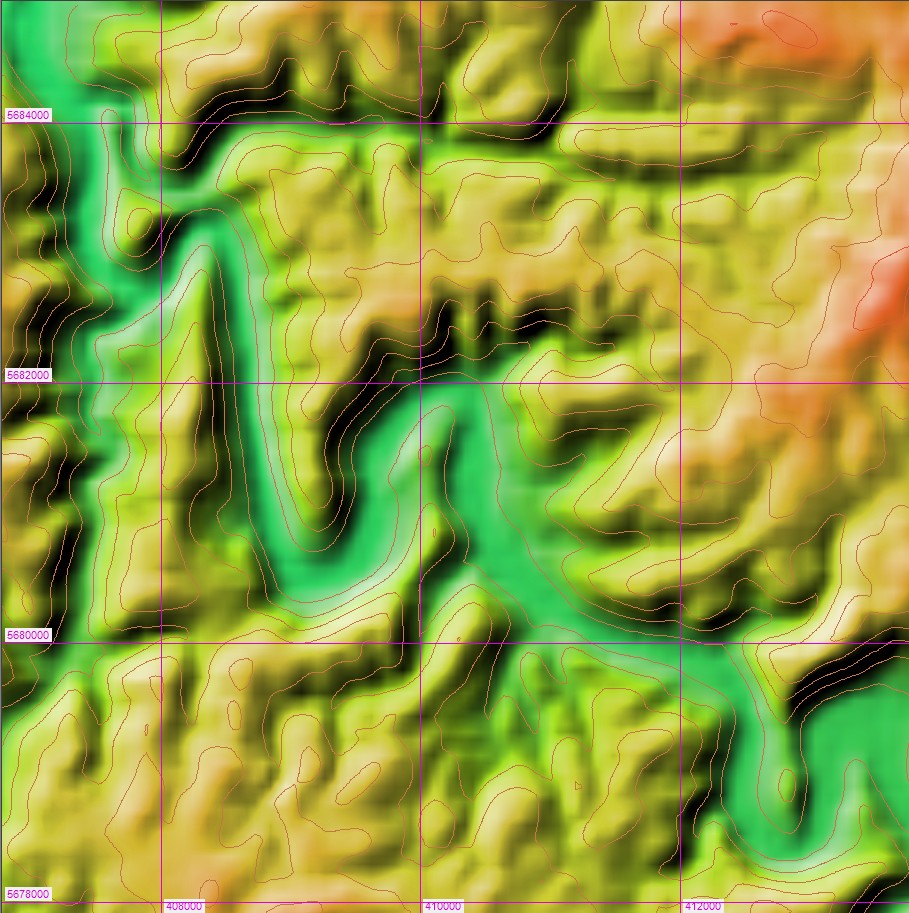 There are no obvious differences and none were expected.
There are no obvious differences and none were expected.Compared to that the new SRTM 1 arc sec data
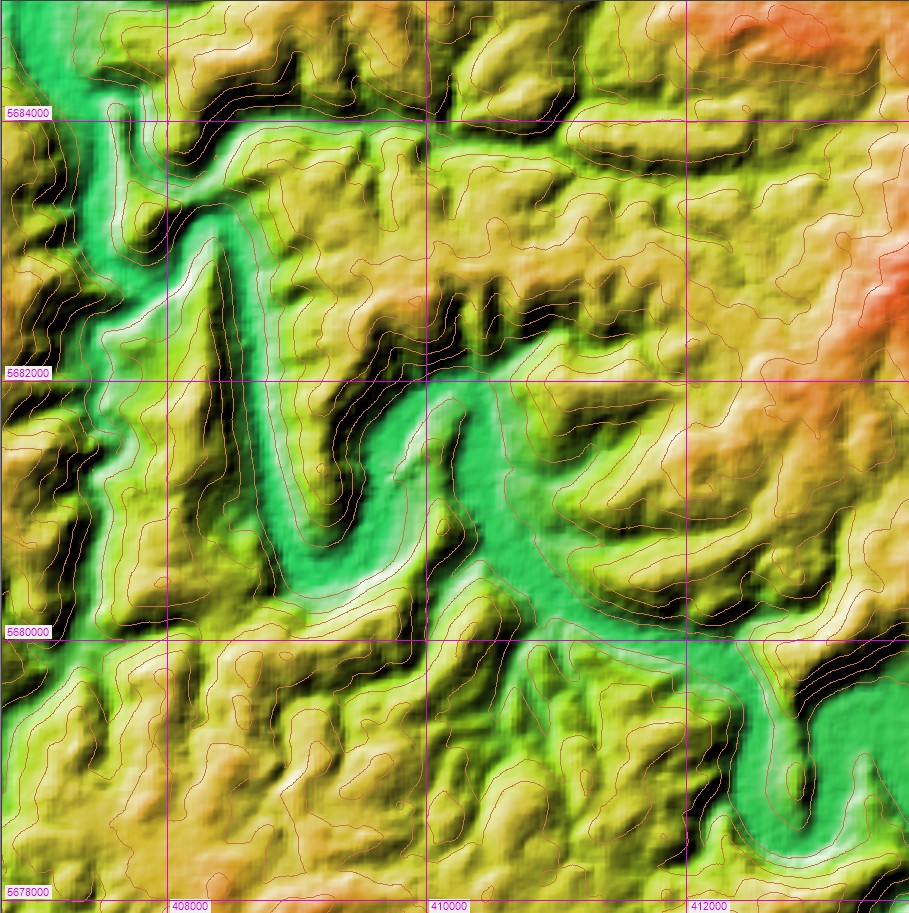 Contours appear somewhat crisper. However, one can also recognize a the sampling raster as a slightly disturbing pattern. It's a question, though, whether that will matter in practice.
Contours appear somewhat crisper. However, one can also recognize a the sampling raster as a slightly disturbing pattern. It's a question, though, whether that will matter in practice.Once again ASTER GDEM2 1 sec data. Nominally same resolution as SRTM 1 sec:
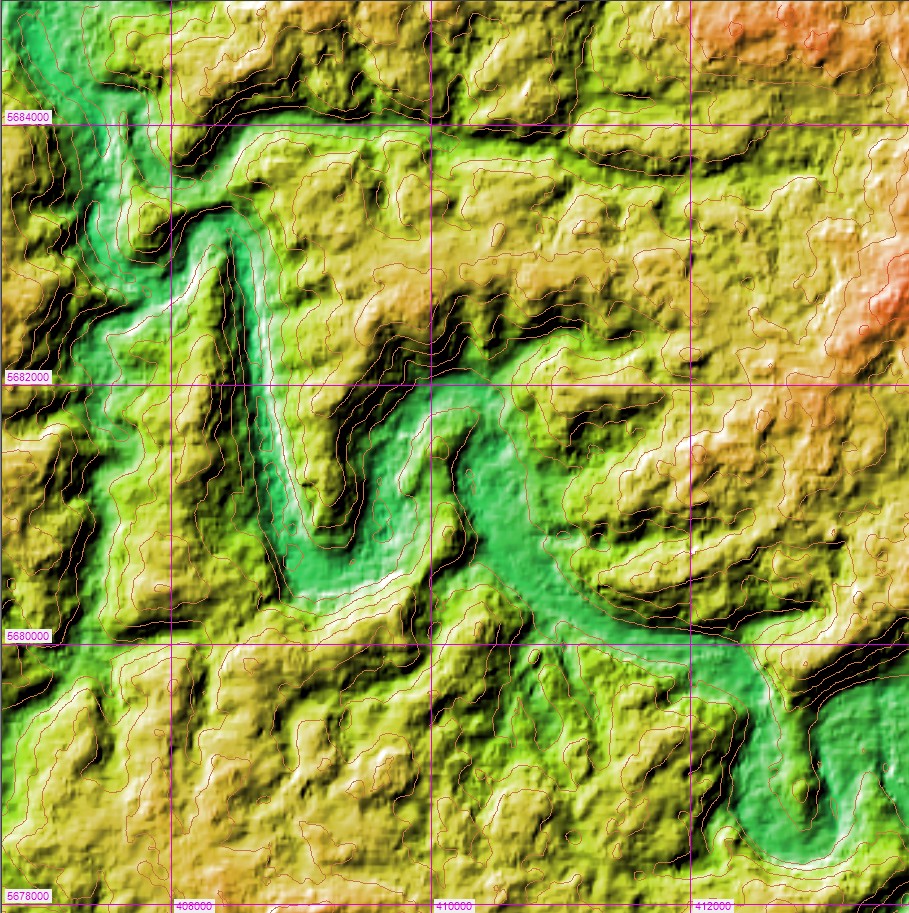 The familiar crater-laden terrain surface as expected from ASTER. This seldom reflects reality, and is often described as artefacts.
The familiar crater-laden terrain surface as expected from ASTER. This seldom reflects reality, and is often described as artefacts.ASTER data, now smoothed, applying the built-in TransDEM filter, using default filter values:
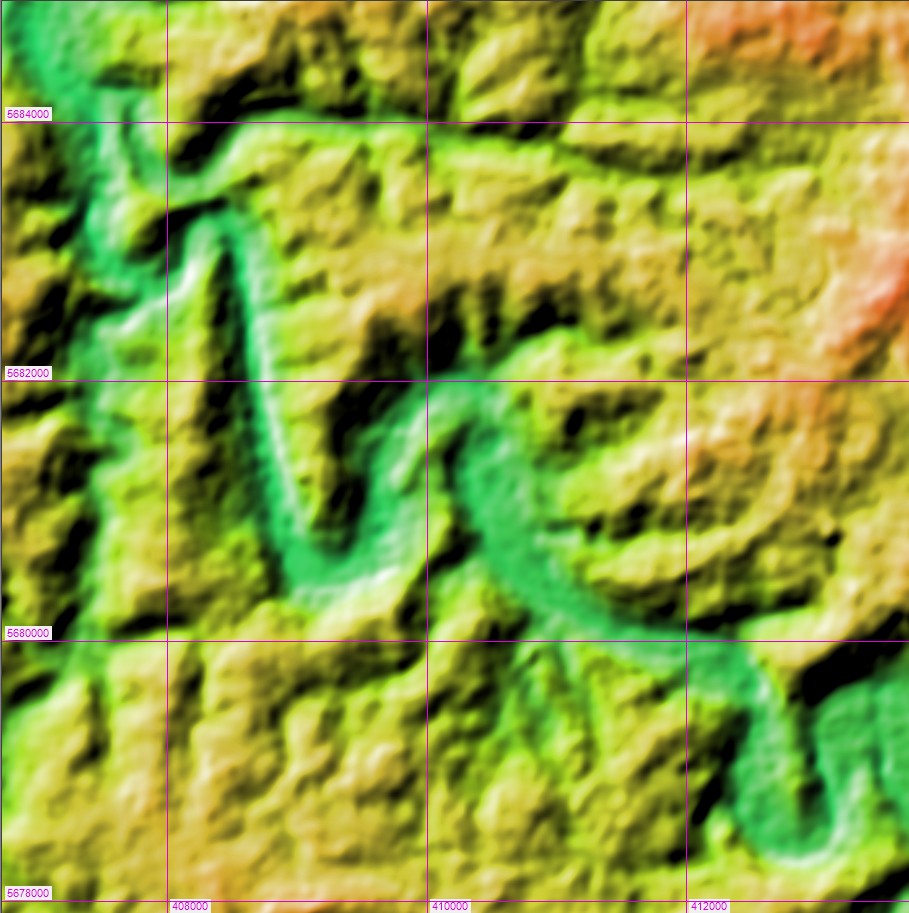 The smoothed ASTER data still lack behind the more even surface of the new SRTM 1 sec data.Conclusion:
The smoothed ASTER data still lack behind the more even surface of the new SRTM 1 sec data.Conclusion: The new SRTM 1 sec data have a noticeable higher resolution than the existing SRTM 3 sec data. Compared to 1 sec ASTER GDEM, SRTM 1 arc sec still looks better, since it does not have the ASTER artefacts. Nevertheless, SRTM 1 sec will show the same errors as 3 sec. Forests, built-up areas and large human structures will not have been filtered out and will distort the data. However, when satellite DEMs are the only reasonable source for a route project, SRTM 1 arc sec is a valuable new option. (For the UK, free O/S Terrain 50 should still be preferred, While nominally at a lower resolution, it has the advantage of being terrestrial, "hand-crafted", not orbital.)



